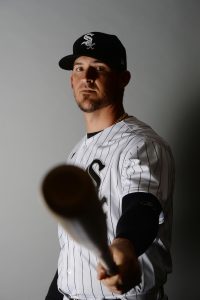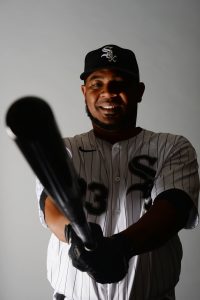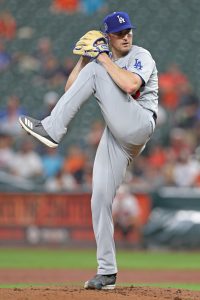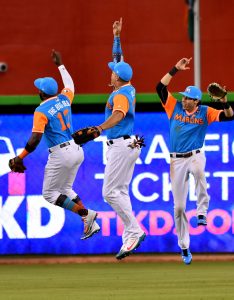It’s draft season in the National Football League, whose three-day festivities got underway Thursday. That got me to thinking about recent No. 1 draft picks in Major League Baseball. If we turn back the clock seven years to 2013, we find one of the biggest disappointments the event has seen in its history. With the top overall choice, the Astros selected Stanford right-hander Mark Appel. It was the second straight year in which Appel went in the first round of the draft, as the Pirates took him at No. 8 in 2012. Appel didn’t sign with Pittsburgh, which at least proved to be the right financial move. He was unwilling to accept the Pirates’ $3.8MM offer, but the Astros’ $6.35MM proposal the next year got the job done.
Unfortunately for Houston, it didn’t get sufficient return on its lofty investment. However, that’s not to place blame on the Astros for betting on Appel. After all, as MLBTR’s Jeff Todd wrote when the Astros signed him: “Appel was ranked as the top prospect in the draft by ESPN’s Keith Law and MLB.com’s Jonathan Mayo. Baseball America had him pegged as the second-best prospect in his class, behind Oklahoma right-hander Jonathan Gray, who went No. 3 to the Rockies.”
Appel clearly wasn’t some out-of-the-box pick for Houston, but he has nonetheless been a disappointment. While Appel did advance to the Triple-A level with the Astros organization in 2015, when he pitched to a 4.48 ERA over 68 1/3 innings, that was the end of the line with the Houston franchise. The Astros subsequently used Appel as part of the five-player package they sent to the Phillies to acquire reliever Ken Giles in December 2015. The change of scenery didn’t work for Appel, who battled arm injuries and failed to log quality production in the Phillies’ system from 2016-17. He then decided to step away from baseball in the winter of 2018. The 28-year-old hasn’t pitched since.
Thanks in part to Appel’s struggles, the Phillies haven’t gotten much from the trade they made to land him. Three of the other players they received – lefty Brett Oberholtzer and righties Tom Eshelman and Harold Arauz – contributed either little or nothing as members of the organization. Righty Vince Velasquez has had his moments, though the 27-year-old has generally had difficulty preventing runs in Philadelphia.
The Astros at least got some good years from Giles, who pitched to a 3.57 ERA and amassed 61 saves in their uniform. Giles was also part of the Astros’ first-ever World Series-winning team in 2017, but the team’s title hardly came on account of him – he allowed 10 earned runs in 7 2/3 innings that postseason. In July 2018, the Astros traded Giles to the Blue Jays in a deal for fellow closer Roberto Osuna. Changing teams has worked out well for both pitchers, though Osuna’s not exactly a fan favorite. His acquisition came as he was in the midst of a 75-game suspension for a violation of the MLB-MLBPA Joint Domestic Violence, Sexual Assault and Child Abuse Policy.
Philadelphia and Toronto are among the teams that have felt some effect from the Astros’ Appel pick, but maybe no one has benefited more than the Cubs. They held the No. 2 selection in the Appel draft and ended up selecting a University of San Diego third baseman named Kris Bryant. If the Cubs had it their way, they’d have come away with Appel, as Gordon Wittenmyer of the Chicago Sun-Times wrote in September 2016. Bullet dodged. Bryant won the NL MVP that year, his second of three All-Star seasons thus far, and helped the Cubs to their first World Series in 108 years. He has consistently been one of the premier players in the majors since he debuted in 2015, and has been a member of five teams that have won anywhere from 84 to 103 games per regular season.
For the most part, the Cubs have been wildly successful since they grabbed Bryant. But it’s interesting to wonder how well they’d have done from 2015-19 had Appel fallen to them instead. And what of the Astros? Yes, there were sign-stealing violations involved, but despite missing on Appel, they were an elite team from 2017-19. How much scarier would they have been (and would they be now) had they taken Bryant No. 1? Would they have still selected third baseman Alex Bregman at No. 2 in the 2015 draft?
It’s fun to consider the what-if scenarios, but it’s unfortunate how Appel’s career has gone. Unless he returns to baseball and makes a considerable impact, he’ll be remembered as a No. 1 pick gone wrong. He’s on track to become just the third top selection to retire without ever having played in the majors.




